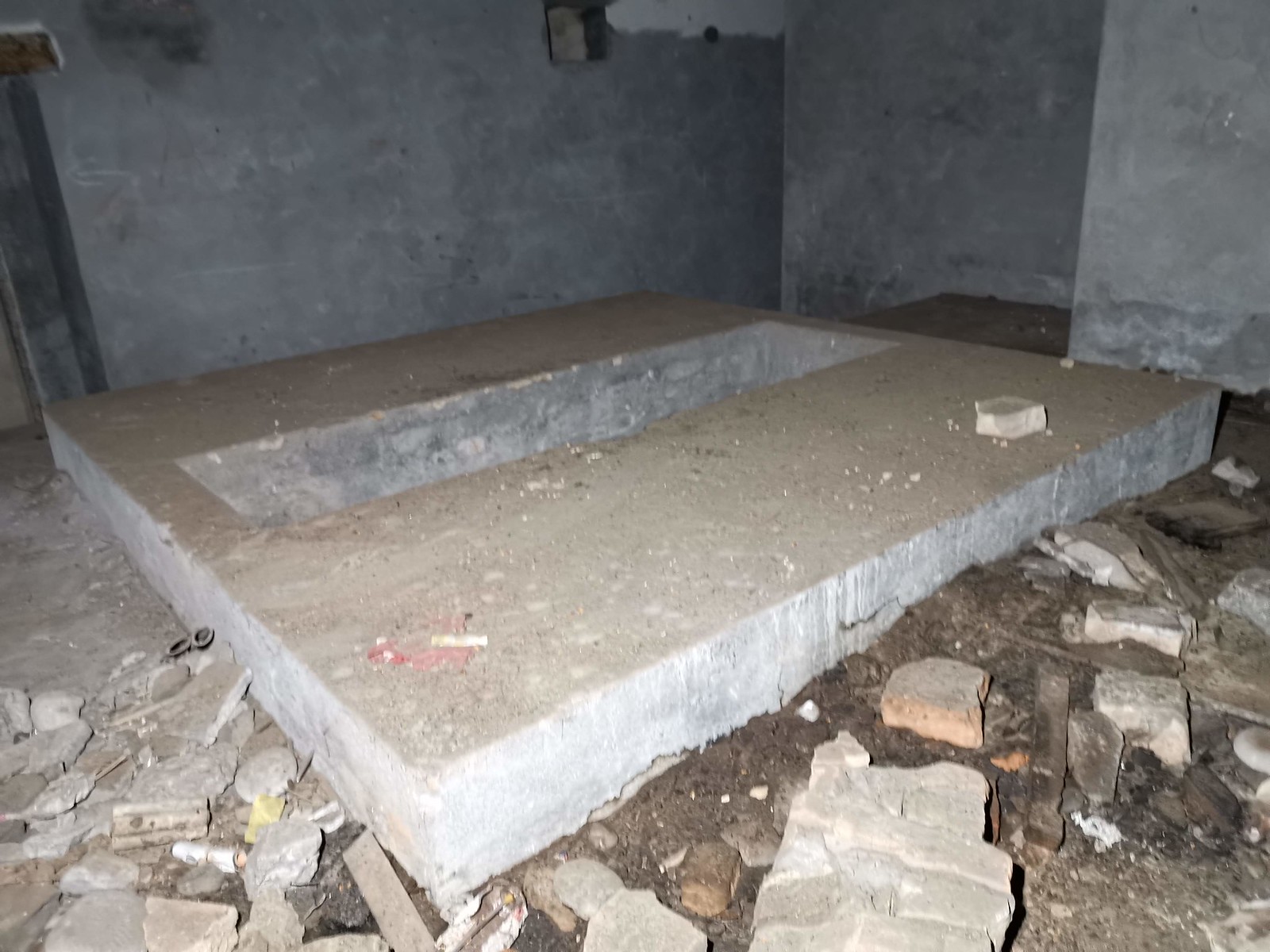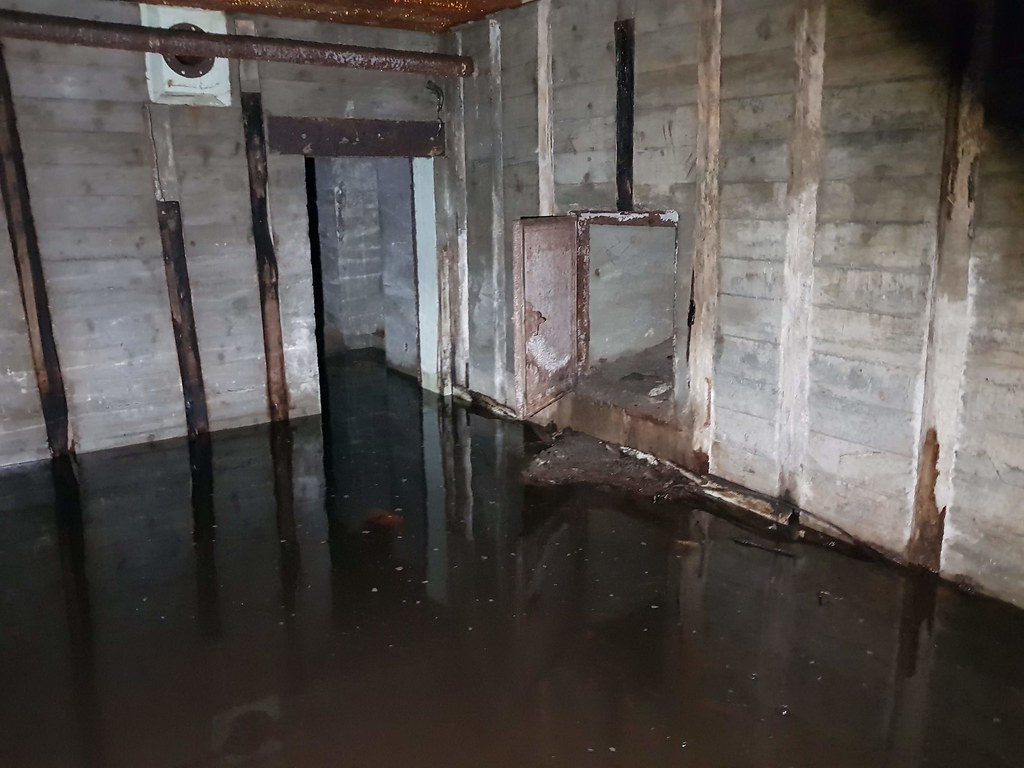Exploring the Mysterious Atlantic Wall Bunkers: A Fascinating Journey Through History
The Atlantic Wall, a massive fortification system built by Nazi Germany during World War II, is a haunting reminder of a dark chapter in human history. The complex stretches for thousands of miles along the coast of Western Europe, consisting of bunkers, gun emplacements, and other defensive structures. Today, these structures serve as a testament to the futility of war, and as a reminder of the brave men and women who fought and died on both sides.
One of the most fascinating aspects of the Atlantic Wall is the network of bunkers that make up a significant part of the fortification system. These bunkers were built to protect the German troops stationed along the coast from Allied invasion, and were designed to withstand heavy bombardment from the sea.
The construction of the Atlantic Wall bunkers was a massive undertaking, and presented many challenges for the German engineers tasked with the job. The bunkers had to be built quickly, using locally available materials, and had to be able to withstand the harsh coastal environment. They were often built into cliffs and hillsides, making excavation difficult and dangerous. Despite these challenges, the German engineers were able to construct a network of bunkers that was an impressive feat of engineering.
Today, many of these bunkers still stand, serving as a reminder of the horrors of war. Visiting one of these bunkers is a fascinating journey through history, and offers a glimpse into the daily lives of the soldiers who served in them.
As I entered one of these bunkers, located on the coast of Normandy, France, I was struck by the sheer size and complexity of the structure. The walls were made of cold, gray concrete, and there was a musty smell in the air. The narrow passageways and cramped rooms gave me a sense of claustrophobia, and I couldn't help but imagine what it must have been like for the soldiers who lived and worked in these cramped conditions.
The bunkers were designed to withstand heavy bombardment, and the thick walls and steel doors were a testament to their durability. The gun emplacements, still visible today, were positioned to provide the best possible vantage point for defending against an Allied invasion.
As I explored the bunker, I couldn't help but feel a sense of awe at the engineering that had gone into its construction. The amount of planning and effort that must have gone into building such a massive structure was truly staggering. It was easy to see why the German soldiers who served in these bunkers were considered some of the best engineers in the world.
However, the reality of war quickly set in as I learned about the challenges and dangers that soldiers faced on a daily basis. The bunkers were often targets for Allied bombing raids, and the soldiers who served in them had to be constantly vigilant. The fear of invasion was always present, and the soldiers were forced to live in cramped, uncomfortable conditions with little privacy or comfort.
Despite these hardships, the soldiers who served in the Atlantic Wall bunkers were incredibly brave and dedicated to their cause. They were often outnumbered and outgunned, but they fought on, determined to protect their country and their fellow soldiers.
Visiting the Atlantic Wall bunkers is a fascinating journey through history, and offers a unique perspective on the realities of war. It is a reminder of the sacrifices made by those who fought and died on both sides, and a testament to the human
 |  |  |
 |  |  |
 |  |  |
 |  |  |
 |  |  |
 |  |  |
 |  |  |
 |  |  |
 |  |  |
 |  |  |
 |  |  |
 |  |  |
 |  |  |
 |  |  |
 |  |  |
 |  |  |
 |  |  |
 |  |  |
 |  |
@atlantic_wall WW2 Bunker Archaeology: A Gun Battery in Italy #atlantic wall♬ original sound - atlantic wall
Pinterest boards

Memory of the Atlantikwall
Explore one of the most fascinating and compelling stories from the ancient past—the story of the bunker riddle.

The fortification was a major tool of Nazi power
Atlantic wall has evolved as a useful WWII history study that examines different aspects of the German troops in Normandy and their War Strategy.

Regelbau is a type of standard-built bunker.
Problem: The Atlantic Wall was a series of fortifications built by Nazi Germany along the coast of France during WorldProduct Promise: The Atlantic Wall is a reminder of the horrors of war and the sacrifices made by those who fought. Proof: The Atlantic Wall is a reminder of the horrors of war and the sacrifices made by those who fought. Proposal: The Atlantic Wall is a must see for history buffs and anyone who enjoys a good adventure!.

The ATLANTIKWALL in Raversyde ★★★☆☆
Problem: The Atlantic Wall was a series of fortifications built along the coast of France during World War II. Promise: The Atlantic Wall provided a safe haven for the French people from the Nazi invasion. Proof: The Atlantic Wall is a must see for any history buff. Proposal: Take a tour of one of these abandoned bunkers and see for yourself!.

️ The Atlantic Wall Made Germany Invincible ️
Get your nation under the protection of our state-of-the-art bunkers - standard or custom.

Regelbau is a type of bunker made to a standard.
A phone conversation reveals the secrets of the most ambitious raid in history--the invasion of Normandy during WWII. Listen now.

The Atlantikwall Museum Noordwijk
The German Atlantic Wall in Normandy during World War II was a system of fortifications built by Nazi Germany on the French coast between 1943 and 1944. The intent was for this barrier to stop Allied invasion forces in their tracks, but it ultimately did not work because of several weaknesses present on its design which were eventually exposed by Allied forces De Gaulle among others who crossed over it freely when they advanced after June 24th.

#WorldWar2 - The Atlantic Wall
The Atlantic Wall was a series of fortifications along the French coast, from the mouth of the River Somme to the Spanish border, during the period of German occupation of France during World War II.

A tour of the Atlantikwall Museum Noordwijk
-The Wall consisted of large concrete, coastal artillery emplacements, and bunkers-It guarded a 335-kilometer shoreline, stretching from the North Sea to the mouth of the Rhine River.
Related Sites:
- what was the atlanticwall and when was it built
- when was atlantic wall first built
- the atlantic wall 3d tours
- Profile | Pinterest
- protectingthefuture with the atlanticwallatlas
- the german coast guard in norway during wwii
- the atlanticwall protected the atlantic westwall 2
- the atlanticwall protected the atlantic westwall
- visit atlantic wall
- protectingthefuture with the atlanticwallatlas 2
- the atlantic wall was over 600 miles
- the atlantic wall proved futile
- the atlantic wall was a giant success
- world war ii atlantic wall timeline germany
- germany germanys defeat and defeat of
- watch the history channel atlanticwall
- watch history channel atlanticwall
- 10 fascinating facts about atlantic wall
- what was the atlanticwall and when was it built 2
- protectingthefuture with the atlanticwallatlas
- the atlanticwall protected atlantic
- the walls had more than 30000 bunkers
- the atlanticwall protected the atlantic westwall
- the atlantic wall re enactment
- what was the atlanticwall and when was it built 2
- the atlanticwall protected atlantic 23
- hitlers atlantic wall ww2 history
- watch history channel atlanticwall
- what was atlanticwall and when was it
- Boards | Pinterest
- the chilling story of atlantic wall
- what was the atlanticwall and when was it built
- learn
- protectingthefuture with
- what was atlanticwall and when was it 23
- the atlanticwall protected the atlantic westwall
- the atlantikwall in europe
- the coastal defences of wwi
- watch the history channel atlanticwall 2
- what was the atlanticwall and when was it built


















































































Comments
Post a Comment